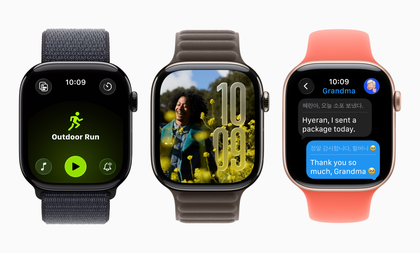WWDC 2025: Apple delivers biggest visual overhaul after iOS 7 in AI era
By IANS | Updated: June 10, 2025 09:33 IST2025-06-10T09:25:10+5:302025-06-10T09:33:34+5:30
Cupertino (California), June 10 Analysts on Tuesday said that this year, Apple highlighted its one of the core ...

WWDC 2025: Apple delivers biggest visual overhaul after iOS 7 in AI era
Cupertino (California), June 10 Analysts on Tuesday said that this year, Apple highlighted its one of the core strength: delivering a unified and seamless experience across all its hardware and added an additional visual appeal to it — the biggest visual overhaul after iOS 7.
Apple has previewed iOS 26 at its flagship developer conference ‘WWDC 2025’ here — a major update that brings a beautiful new design, intelligent experiences, and improvements to the apps users rely on every day. The new design provides a more expressive and delightful experience across the system while maintaining the instant familiarity of iOS.
Counterpoint Research Director, Tarun Pathak, told IANS that the updated visual design, featuring the new "liquid glass" aesthetic, is set to further enhance user engagement across Apple's device ecosystem.
“However, two announcements particularly captured our attention: ‘On-device AI for Developers’ and ‘iPadOS Reimagined’. The ability for developers to access Apple's on-device models through the Foundation Models framework, coupled with the introduction of Apple Intelligence across iPhone, iPad, Mac, Apple Watch, and Apple Vision Pro, is a positive move in its AI journey where it is being perceived as being behind wrt the competitors,” Pathak explained.
However, AI of 2025 is different to the AI hype of 2024. Users are still getting warmed upto AI use-cases and “we have not see a killer use case yet”.
The most impactful revelation came from the iPadOS updates. These enhancements will solidify the iPad's position as a robust device for both content creation and consumption on the go, Pathak noted.
The tech giant showcased watchOS 26, offering a beautiful new look and even more intelligence for a more personalised experience, to support users in staying active, healthy, and connected.
A new design with Liquid Glass makes features like the Smart Stack, Control Center, the Photos watch face, and in-app navigation and controls more expressive, while maintaining the instant familiarity of watchOS.
According to Prabhu Ram, VP at CyberMedia Research (CMR), Apple adopted a fundamentals-first approach, emphasising user interface (UI) enhancements over AI. Rather than chasing speculative AI trends, Apple focused on delivering immediate, tangible value to users.
“A key highlight was the introduction of on-device access to Apple’s large language model through the new Foundation Models framework. This move signals a decentralised AI strategy, empowering developers to create differentiated experiences directly on Apple devices,” Ram told IANS.
However, the success of this approach will hinge on developer adoption, the strength of Apple’s tooling, and the company’s ability to iterate quickly.
Apple’s tightly integrated hardware ecosystem gives it a significant advantage and a unique opportunity to lead in AI monetization. However, this window of opportunity may close rapidly if Apple fails to keep pace, especially as agentic AI and cross-platform innovations accelerate elsewhere, said Ram.
Disclaimer: This post has been auto-published from an agency feed without any modifications to the text and has not been reviewed by an editor
Open in app